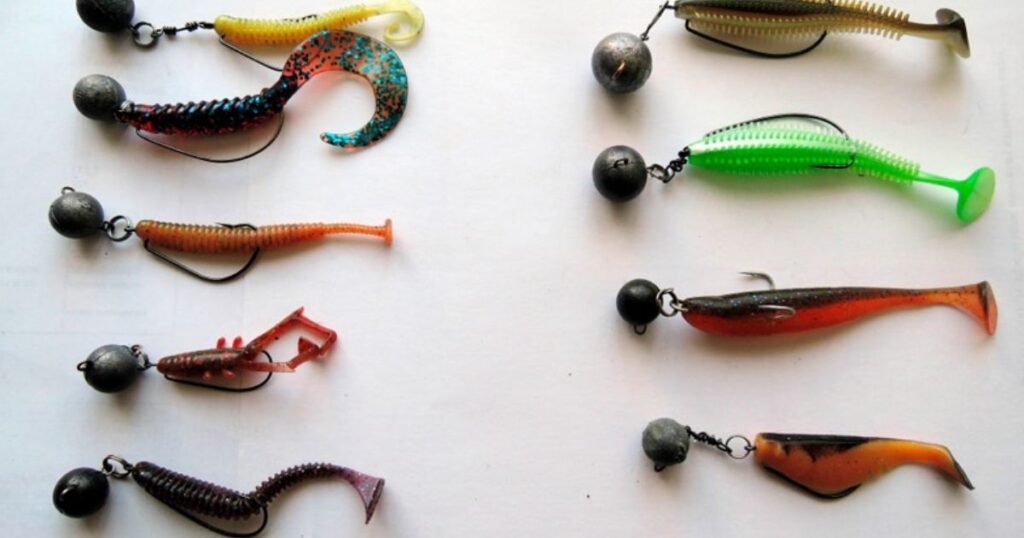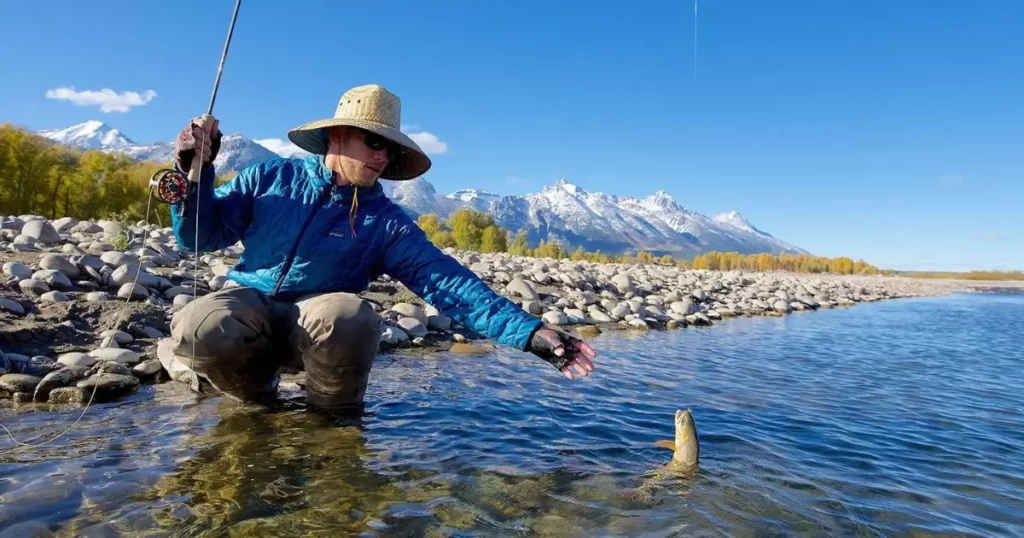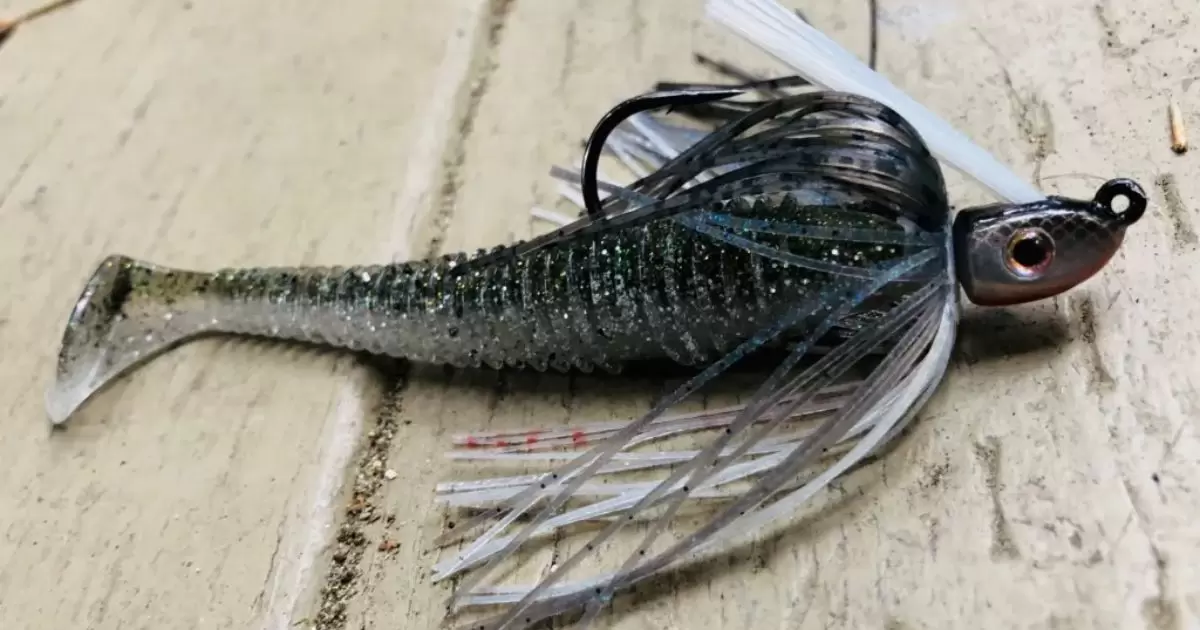A swim jig for bass is a specialized fishing lure designed to mimic prey fish and attract bass. It consists of a lead head with a single or double weed guard and a silicone skirt, often accompanied by a soft plastic trailer.
Are you ready to discover the secrets of unlocking bass-catching potential, If you’ve ever wondered, How to fish a swim jig for bass? you’re in the right place. In this guide, we’ll dive into the essential techniques and strategies to help you become a more successful bass angler with the swim jig.
Fishing a swim jig for bass involves casting your lure near underwater structures like weeds, rocks, or submerged vegetation and retrieving it with a steady, enticing motion. The swim jig’s lifelike presentation and its ability to mimic a fleeing baitfish make it a go-to choice for anglers looking to hook into some trophy-sized bass. Learn the nuances of this technique and improve your bass fishing game today.
Selecting the Right Swim Jig
Choosing the appropriate swim jig is crucial for success. Consider factors like water clarity, depth, and the size of the baitfish in the area. Lighter-colored swim jigs work well in clearer waters, while darker colors are more effective in murkier conditions. The weight of the jig head also matters; lighter jigs are ideal for shallower waters, while heavier ones help you reach deeper zones. Additionally, pay attention to the skirt’s color and design, as it should resemble the local forage. Tailor your swim jig selection to the specific conditions and the bass’s preferences in your fishing location.
Essential Gear and Tackle
Your gear and tackle are fundamental for a successful swim jig bass fishing expedition. Choose a medium-heavy to heavy action rod paired with a baitcasting reel. This combination provides the necessary power to cast and retrieve swim jigs efficiently. Use quality braided or fluorocarbon fishing line to ensure sensitivity and control during the fight. Don’t forget polarized sunglasses for better visibility in the water, and a good pair of fishing gloves for handling bass safely. Well-maintained gear can make a significant difference in your fishing experience and landing more bass.
Locating Bass Habitat
Understanding the bass’s habitat is key. Bass often hide near structure, such as submerged vegetation, rocks, fallen trees, and docks. They prefer these areas as they offer cover and a vantage point to ambush prey. Focus on areas where you find these structures, especially during dawn and dusk when bass are more active. Utilize your electronics to locate drop-offs, points, and ledges where bass may be waiting. Properly identifying bass habitat will increase your chances of a successful catch when fishing with a swim jig.
The Art of Casting and Retrieving
Casting and retrieving a swim jig demands finesse. Start by casting your jig to the desired location, letting it sink a bit, and then begin your retrieve. Experiment with various retrieval speeds, keeping in mind that a steady, slow to medium retrieve often works best. Ensure your swim jig remains close to the structure without getting snagged. Jig the bait by imparting subtle twitches to imitate a wounded or fleeing baitfish. The key is to make your jig move naturally, tempting nearby bass to strike.
Jig Trailers and Soft Plastic Options

Enhance your swim jig’s appeal with the right trailer. Soft plastic trailers mimic the tail of a baitfish and add a lifelike movement to your jig. Consider various options like paddle tails, curly tails, or crawfish imitations. Experiment with different colors and sizes to match the local forage and water conditions. Some trailers also have scent or flavor additives to attract bass. Choose your trailer wisely to make your swim jig more enticing and increase your chances of catching more bass.
Reading Bass Behavior
Bass behavior varies with the season and environmental factors. In spring, they are often closer to the shallows for spawning, while in summer, they may move to deeper waters to escape the heat. Understanding these patterns is essential. Pay attention to the weather, water temperature, and time of year. Bass may become more or less aggressive based on these variables. Adapt your swim jig fishing strategy accordingly, knowing when to slow down or speed up your presentation to trigger strikes.
Mastering Different Retrieves
To become a proficient swim jig angler, you need to master various retrieval techniques. Beyond the steady retrieve, you can employ techniques like the yo-yo, where you raise and lower your rod tip to make the jig dart and stall. Another option is the “burn and kill,” where you reel quickly, pause, and then resume. Each technique can trigger different reactions from bass. Experiment with these retrieves to find what works best in different situations, and be ready to adapt as the bass’s preferences change.
Setting the Hook and Fighting Bass
When a bass strikes your swim jig, setting the hook effectively is crucial. Wait for a distinct tug on your line or feel the bass’s weight before setting the hook with a sharp upward motion of your rod. Maintain steady pressure on the fish to keep it from escaping or getting entangled in cover. Keep your rod tip up to prevent the bass from diving into structure. Carefully fight the bass, using your drag system to prevent line breakage. With the right technique, you can successfully land your catch and avoid losing bass due to hook pulls or line snaps.
Fishing a Swim Jig in Different Seasons

Fishing a swim jig for bass can be successful throughout the year, but your approach should vary with the seasons. In spring, focus on shallow areas near spawning grounds, using natural-colored jigs. As summer arrives, transition to deeper water and employ faster retrieves to mimic baitfish activity. During the fall, fish become more active, and a swim jig can imitate fleeing shad. In winter, opt for a slower presentation in deeper, more sheltered areas. Understanding how bass behavior changes with the seasons will help you adapt your swim jig tactics effectively.
Tips and Tricks for Success
To improve your swim jig bass fishing, consider some additional tips and tricks. Use scent attractants on your soft plastic trailers to make your bait more appealing to bass. Keep an eye on your line for subtle movements or slack, as this can indicate a strike. Be patient and persistent, as sometimes bass need a little coaxing to strike a swim jig. Don’t forget to maintain your gear regularly, including checking your line for nicks and ensuring your hooks are sharp. Lastly, pay attention to the colors and patterns of local forage fish, as replicating them with your swim jig can make a significant difference in your success rate.
FAQs
Q: What’s the best gear for fishing a swim jig?
A: Opt for a medium-heavy to heavy action rod and a baitcasting reel. Use braided or fluorocarbon line for sensitivity. Polarized sunglasses and fishing gloves are also handy.
Q: Where can I find bass when using a swim jig?
A: Look for bass near submerged structures like vegetation, rocks, and docks. They use these areas for cover and ambushing prey.
Q: What’s the key to an effective cast and retrieve?
A: Cast your swim jig, let it sink, and retrieve it with a steady motion. Experiment with different speeds and gentle twitches to mimic natural baitfish movements.
Q: How can I enhance my swim jig’s appeal?
A: Use soft plastic trailers that resemble baitfish tails. Experiment with various colors and sizes to match the local forage and water conditions.
Q: How do I adapt my swim jig strategy for different seasons?
A: Focus on shallow areas in spring, deeper waters in summer, faster retrieves in fall, and slower presentations in winter.
Conclusion
In conclusion, mastering the art of fishing a swim jig for bass is a rewarding pursuit for any angler. By selecting the right swim jig, understanding bass behavior, and honing your casting and retrieval techniques, you can significantly increase your chances of hooking into those elusive bass. Remember to adapt your strategy to the changing seasons, stay patient, and continuously refine your skills to become a more successful swim jig angler.
With the right gear, knowledge, and a dash of creativity, you can consistently entice bass to strike your swim jig. So, the next time you ask, How to fish a swim jig for bass? know that you’re equipped with the know-how to make your fishing trips more enjoyable and productive.

